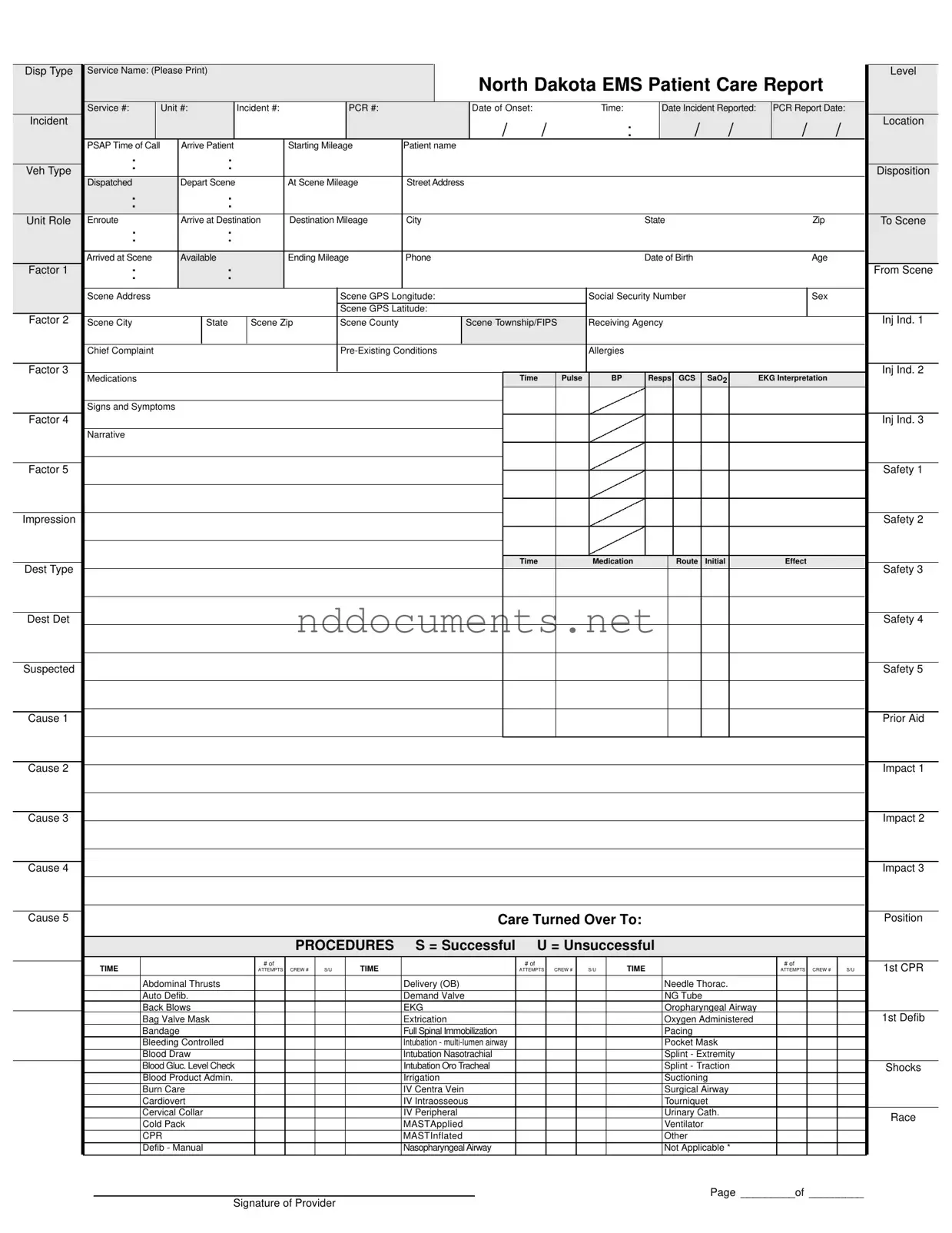The North Dakota EMS Patient Care Report form is a vital document that captures essential information regarding patient care during emergency medical services. This comprehensive form includes critical data fields such as the service name, incident details, and patient demographics, ensuring that all pertinent information is recorded accurately. It outlines the timeline of the incident, from the time of the call to the arrival at the scene, and tracks the mileage for billing purposes. Patient information, including name, date of birth, and medical history, is documented alongside the chief complaint and pre-existing conditions. The form also details the procedures performed, noting their success or failure, and captures vital signs and medications administered. Additionally, the report includes sections for billing information, allowing for seamless processing of insurance claims. It emphasizes the importance of patient consent and refusal of service, safeguarding both the provider and the patient. Overall, the North Dakota EMS Patient Care Report form serves as a crucial tool for ensuring quality care and accountability in emergency medical situations.
